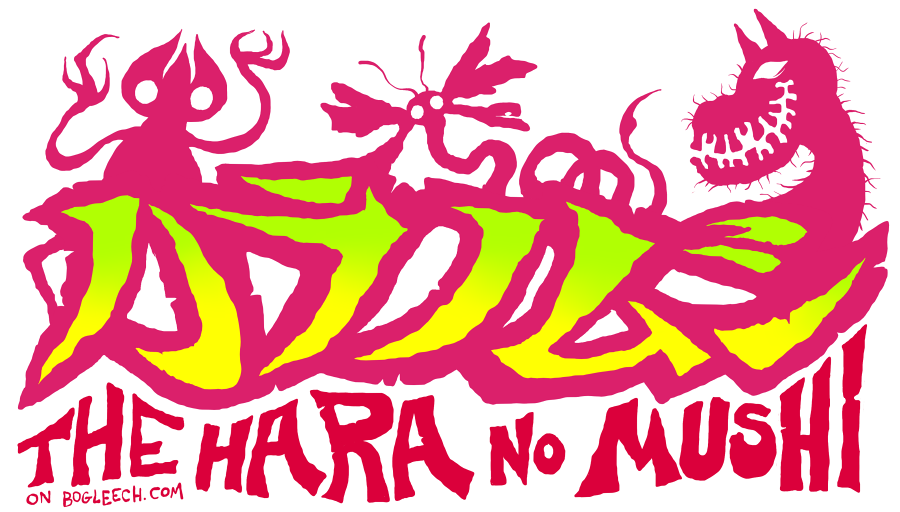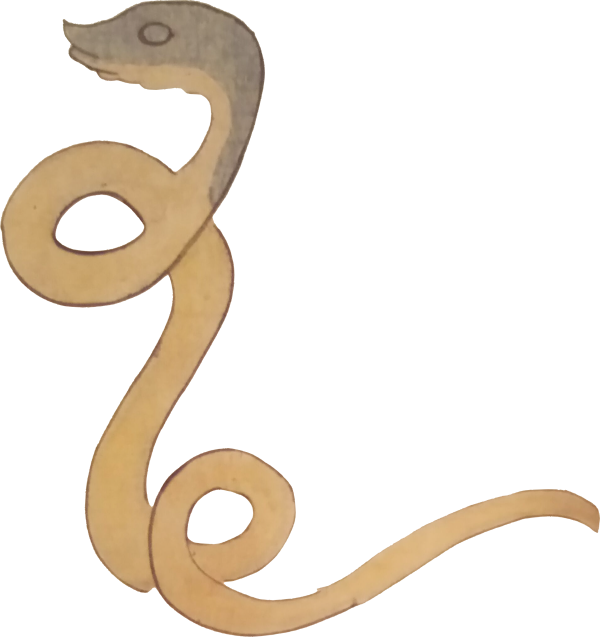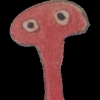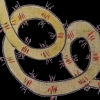
DAY TWENTY TWO: KAZEMUSHI
("Cold Bug")
Written by Jonathan Wojcik, Researched and Translated by Rev Storm

This sure is a simple one today; it's a greyish worm with an animal-like head that seems to cause the common cold, or at least, it is found in people who are suffering from the common cold.
Design Review:
This is my first NEGATIVE Hara no Mushi review! This worm is totally underwhelming! The common cold deserved so much better than just a greyish snake, given some of the other creatures we've seen.
TODAY'S REAL WORLD PARASITE:
Rhinovirus

"Wait!" I hear some of you saying. "A virus doesn't count as a parasite! A virus isn't even alive!"...which you can't be faulted for thinking, since it was a widely accepted proposal for many decades that viruses are essentially "rogue" genetic information that broke free from living organisms and cannot, in its own right, be considered a type of organism itself, especially since it possesses not even an entire single cell, or the ability to eat, or anything else that usually defines something as alive.
Viruses, however, can be very complex structures, and recent analysis demonstrates that viruses have their own truly unique genes that may be older than even all known unicellular life. It is most likely, then, that viruses evolved over time from something that was "more alive," and share a common ancestry with the rest of the domain of living things.
As you may know, a virus is essentially only a capsule of protein molecules surrounding a strand of DNA or RNA. It can't move of its own volition at all, but that capsule is studded with glycoprotein "spikes," really more closely resembling small suckers or bulbs, which bind on contact to the right kind of cell in the right kind of host, automatically pulling the virus into the host cell and releasing its genetic information. This in turn uses the machinery of the cell to replicate itself and build more capsules, which may multiply to the point of destroying the cell from within.
A Rhinovirus binds only to the cells lining your sinuses and upper respiratory tract, and once its presence is detected, your cells begin to squeeze out their histamine, which is what allows white blood cells to permeate your capillaries and engage the enemy. The bad news is, this squeezing action puts pressure on our nerves and is what we actually experience as a sore throat and other forms of inflammation. To help flush viruses from the body, your sinuses also greatly increase their production of mucus, which also acts as a medium for those white blood cells to navigate. During the peak of your cold, this mucus may begin to appear yellow or green, but that isn't the color of the infection; that's the color of the enzyme your white cells release to kill pathogens. That gross green is your body's disinfectants!
The worst of the common cold is, of course, the "common" part. The average person getting between two and four colds a year. This is because there are simply so, so many strains of the cold, which is also why we don't have a "cure" for it: a virus can only truly be treated through prevention, when our own immune system remembers that specific strain and develops the appropriate antibody. A vaccine uses a viral sample to trigger this natural process, but it simply isn't worth the expense to develop a vaccine for every possible strain of the common cold when it tends to clear up so uneventfully in only a few days.
Vaccination makes sense for flu, which has many properties in common with the cold but hits much, much harder and has even been known to kill. If you're wondering why the weaker "cold" is the one with the unmanageable number new strains, that question actually answers itself: a cold is annoying, but not usually so debilitating that the host stays in bed during its most contagious phase. The greater impact of the flu, therefore, is self-limiting and slows its spread compared to the humbler rhinovirus.
Two more things to clarify about this parasite: you really are more likely to come down with the infection in colder weather, and the only thing that reduce the duration and severity of the symptoms, typically just slightly, is the intake of unflavored zinc supplements of 75 milligrams or less. Any more than that can have adverse side effects of its own...and no, vitamin C never did anything that we know of.
NAVIGATION:









































































































